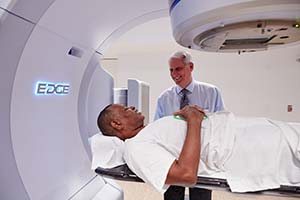Fight Breast Cancer Like a Big Cat
Did you know breast cancer isn’t just a human disease? Some mammals, like jaguars, lions, leopards and tigers can develop this disease, too. These big cats are at a much higher risk of developing this disease than small cats. That’s why zoo animals (and humans) need to receive regular examinations, like mammograms, to check for health conditions like breast cancer. While zookeepers and vets have to keep an eye on unusual tumors appearing on their zoo big cats, you will have to watch out for breast cancer signs in yourself and consult with a doctor for proper diagnosis.
Some breast cancer signs and symptoms are the same for humans and mammals:
- A mass or lump in the breast
- Abnormal breast changes, such as swelling breast, thickening skin or reddening skin
- Nipple abnormalities, such as spontaneous or bloody discharge, scaliness or retraction (nipple pulling inward)
Breast Cancer Symptoms
Early-stage breast cancer may not show signs or symptoms, so early screening is essential. Your healthcare provider may also suggest you schedule a mammogram if you have any of the following:
- Personal or family history of breast cancer and/or ovarian cancer
- Previous imaging showing unusual findings
- Biopsy showing benign mass
- Implant removal or planning
What Is a Mammogram?
A mammogram is an X-ray image to help doctors look for early signs of cancer or other abnormalities in the breast. Here's how a mammogram is usually done:
What to Expect
- You will stand in front of a specialized X-ray machine during the mammogram procedure.
- A medical technologist will place your breast on a flat plate.
- A parallel plate will firmly compress your breast to hold it still while the X-ray takes images.
- These steps will be repeated to capture a side view of the breast.
- Your other breast will be X-rayed in the same way.
The entire procedure may take about 20 minutes. More images may be needed for some women with larger breasts or implants. Your breasts may be more sensitive if you are about to have or currently have your period. While it’s normal to feel some pressure during a mammogram, inform your technologist at once if you feel any pain.
What Age Should Women Get a Mammogram?
The U.S. Preventive Services Task Force recommends that women with an average risk for breast cancer aged 40 to 74 years old get a mammogram every two years. Women should talk to their doctor to determine when they should start and how often they should get a mammogram.
Mammograms cannot prevent breast cancer, but they can help detect the disease at its early stages when it’s easier to treat. Discuss with your doctor whether a mammogram or other screening tests may be right for you, their benefits and potential risks and when you should have them.
Make Time for Your Mammogram
The more your doctor knows about your health, the better they can help you. An annual mammogram can find cancer up to three years before symptoms appear, making it easier to treat. So don’t delay care.
Sources:
American Association for Cancer Research
American Cancer Society
Centers for Disease Control and Prevention
National Cancer Institute
National Library of Medicine
Schwarzman Animal Medical Center
U.S. Preventive Services Task Force
Zocalo


